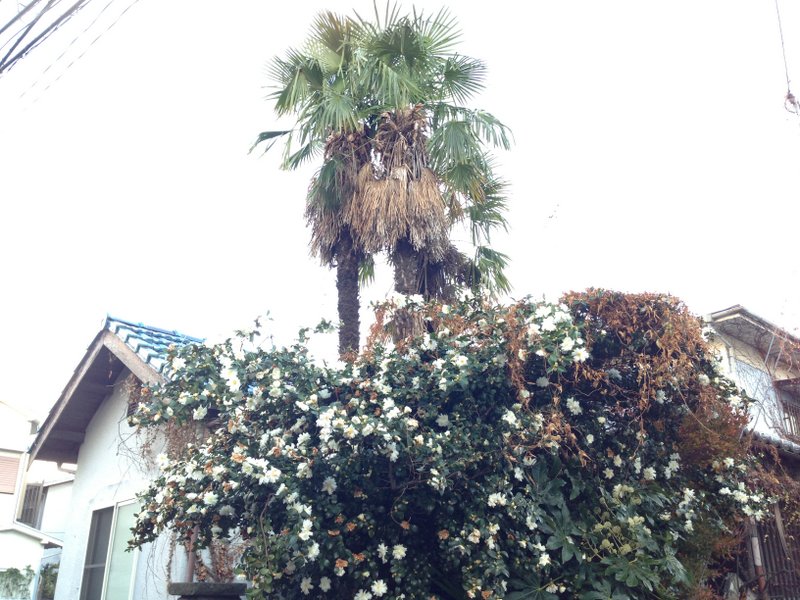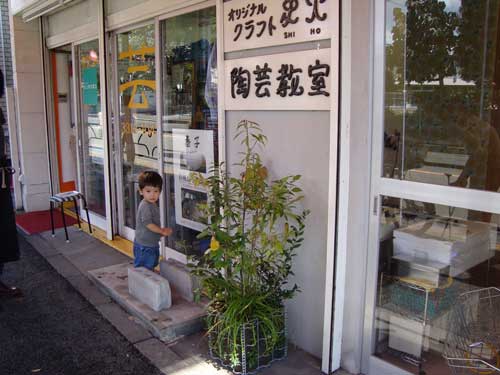
Thursday 5bai Midori delivered the three “satoyama units” I ordered, two for my home and one for Shiho, the pottery studio I attend in Suginami. I was amazed that the delivery service was uninterrupted by Typhoon #18 (known as Melor outside Japan), the first typhoon to hit Japan’s mainland in two years.
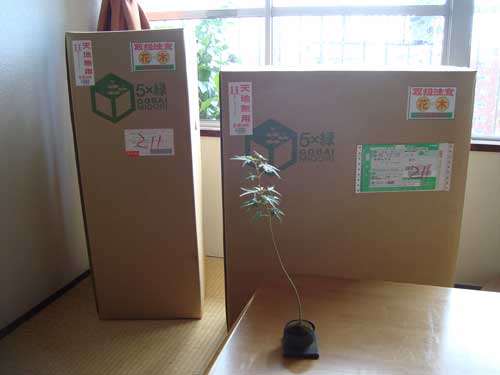
5bai Midori’s native plants were more than I expected. It takes 4 weeks from ordering to delivery, and they arrive in large cardboard boxes. When the teachers and students opened the box at Shiho, they found a lizard. I hope he adjusts to life in the big city.
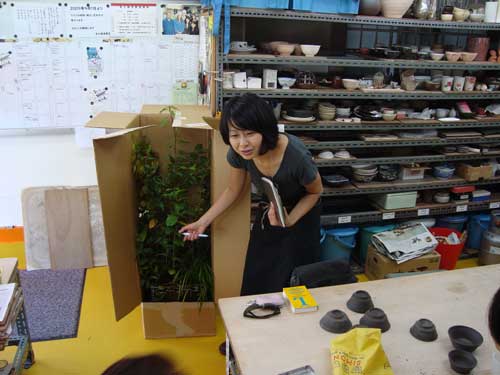
The “satoyama units” are amazing: a mix of small trees, bushes, grasses and vines. The Shiho unit is a 30 centimeter square. The home ones for the balcony are 20 cm square and a rectangle measuring 15 cm by 50 cm. Included is a detailed list of the plants, including name, family name, latin name, description and care instructions. There is even a description of the metal frame and the soil. Attached to many plants are small metal tags with the plant’s name.
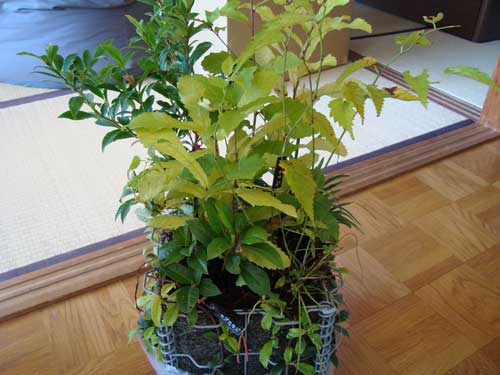
I will blog about the seasonal change and growth of these 5bai Midori satoyama units. The locations could not be more different: the home balcony is on a high floor balcony with full southern sun. The pottery studio faces north and is underneath an awning.

The pottery teachers were somewhat concerned about police protests (apparently they previously complained about the air conditioning units that also sit on the small strip of pavement between studio and sidewalk), and the possibility of theft. Still, they are excited to have this live environment which will slow pedestrians down and introduce more people to their studio. If it works out, I’d like to add several more units.
Here are my previous posts about 5bai Midori:
Beautifying major streets (May 5)
Meeting Tase Michio (May 21)
5bai Midori, or 5 sided green (May 22)
3 Projects created by 5bai Midori (July 22)
Satoyama and biodiversity (August 26)
And here are the sketches they created when we first discussed the projects.
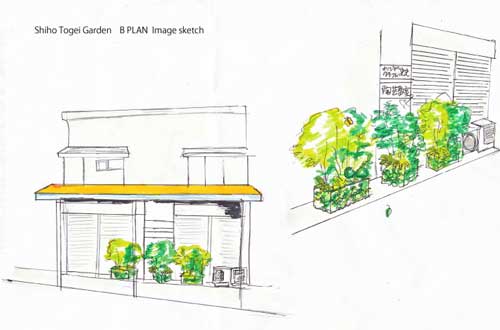
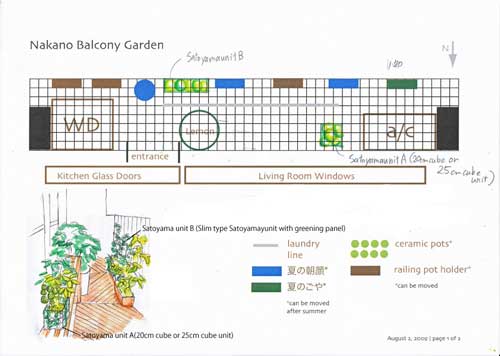
The balcony plant list is: Reineckea carnea, Quercus acustissima, Quercus serrata, Camellia sasanqua, Quercus myrsinaefolia, Clematis terniflora, Carex siderosticta, Trachelospermum asiaticum, Trachelospermum jasminoides, Eurya japonica, Petasites japonicus, Ardisia japonica, Liriope muscari, Kerria japonica.


